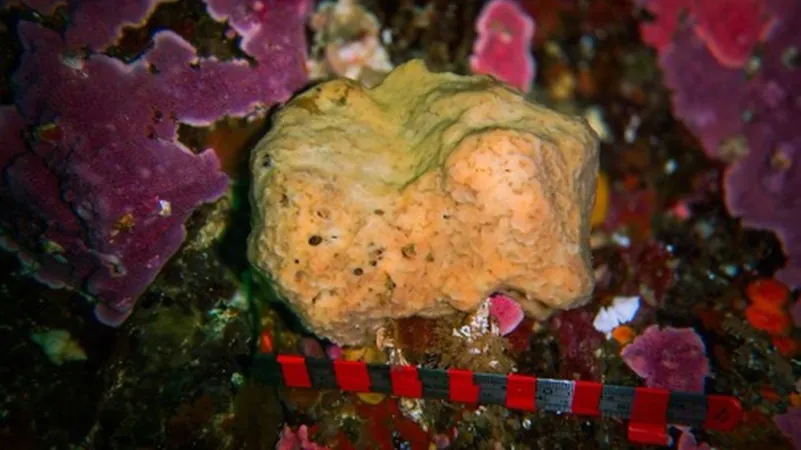
Sneezing Sea Sponges: A Fascinating Discovery off British Columbia’s Coast!
2025-01-07
Author: Jacques
A groundbreaking study has just unveiled an astonishing behavior of sea sponges found off the coast of British Columbia—these incredible creatures are capable of what can only be described as sneezing! This remarkable finding comes from researcher Sally Leys and her dedicated team, who meticulously observed a sponge nicknamed "Belinda" over a four-year period via an array of underwater cameras.
Leys explained that the team, working with Ocean Networks Canada, employed eight underwater cameras to monitor the sponge's activities in its natural habitat. Their goal was to understand how these organisms react to changing climatic conditions and shifting weather patterns. What they discovered was nothing short of extraordinary: the sea sponge exhibits "sneeze-like" contractions that can last for extended periods, a crucial process for clearing away debris accumulated during filter feeding.
“Think of it as a slow sneeze,” Leys shared. When dirt or irritants come into contact with the sponge, it encapsulates the debris in mucus and expels it, effectively cleaning itself. Interestingly, smaller sponges managed to clear their irritants more quickly, completing a "sneeze" in roughly 40 minutes to an hour, compared to Belinda’s impressive but lengthier duration of around a day.
Despite its seemingly stationary nature, courtesy of its plant-like appearance, the sponge turned out to be surprisingly active. The rigorous monitoring conducted from 2012 to 2015 revealed a lively creature, actively “bouncing up and down” in its environment, contrary to how it might appear to a passing diver.
The insights gained from this research, published in the Marine Ecology Progress Series, emphasized the sponge's adaptive behaviors and responses to environmental shifts. Perhaps the most eye-opening revelation was Belinda's seasonal dormancy: the sponge enters a resting state, contracting to half its size during winter months, even though it lacks traditional muscle and nervous systems. This phenomenon raises intriguing questions about the biological mechanisms that enable the sponge to react so dramatically to food availability.
During summer, the sponge’s sneezing behavior becomes essential as it responds to increased phytoplankton blooms in the water, signaling a change in its nutrient-rich surroundings. Leys underscored the significance of studying these dynamics, suggesting that they could enhance our understanding of how sponges—and potentially other marine life—react to fluctuating ocean conditions.
Remarkably, this research holds the record for the longest continuous documentation of sponges in their natural setting. Although the camera arrays were dismantled in 2015 after the project's conclusion, divers have recently confirmed that Belinda is still thriving and has returned to her vibrant original color, just two months ago.
Leys expressed her optimism for future studies, highlighting the importance of re-establishing the camera setup for ongoing research. She envisions that additional years of monitoring could unveil even more about the sponges' environmental interactions, particularly the potential connections to broader oceanic changes.
With such captivating developments, one can't help but wonder what new discoveries lie ahead in the fascinating world beneath the waves. Researchers are poised to deepen our understanding of these enigmatic creatures and their vital roles in marine ecosystems. Stay tuned for more astonishing revelations from the depths of our oceans!



 Brasil (PT)
Brasil (PT)
 Canada (EN)
Canada (EN)
 Chile (ES)
Chile (ES)
 Česko (CS)
Česko (CS)
 대한민국 (KO)
대한민국 (KO)
 España (ES)
España (ES)
 France (FR)
France (FR)
 Hong Kong (EN)
Hong Kong (EN)
 Italia (IT)
Italia (IT)
 日本 (JA)
日本 (JA)
 Magyarország (HU)
Magyarország (HU)
 Norge (NO)
Norge (NO)
 Polska (PL)
Polska (PL)
 Schweiz (DE)
Schweiz (DE)
 Singapore (EN)
Singapore (EN)
 Sverige (SV)
Sverige (SV)
 Suomi (FI)
Suomi (FI)
 Türkiye (TR)
Türkiye (TR)
 الإمارات العربية المتحدة (AR)
الإمارات العربية المتحدة (AR)